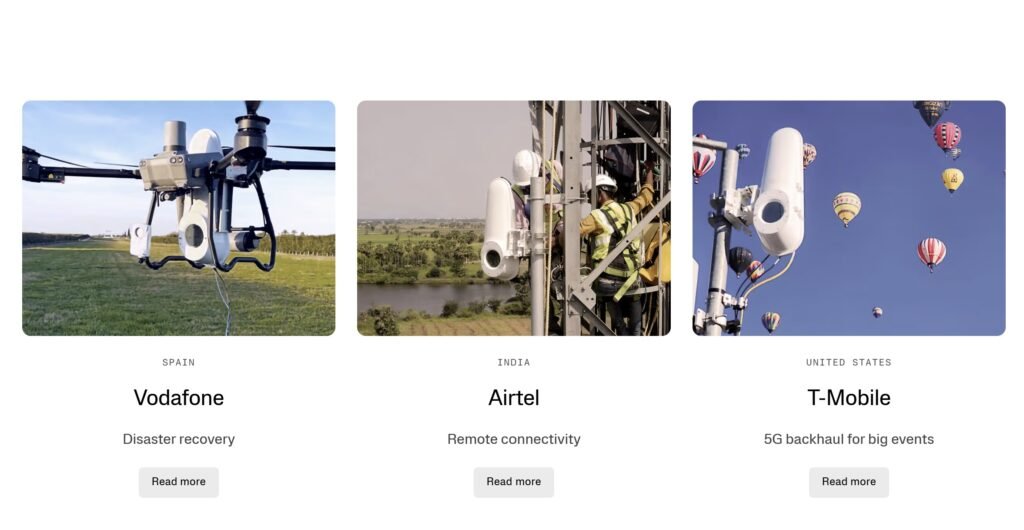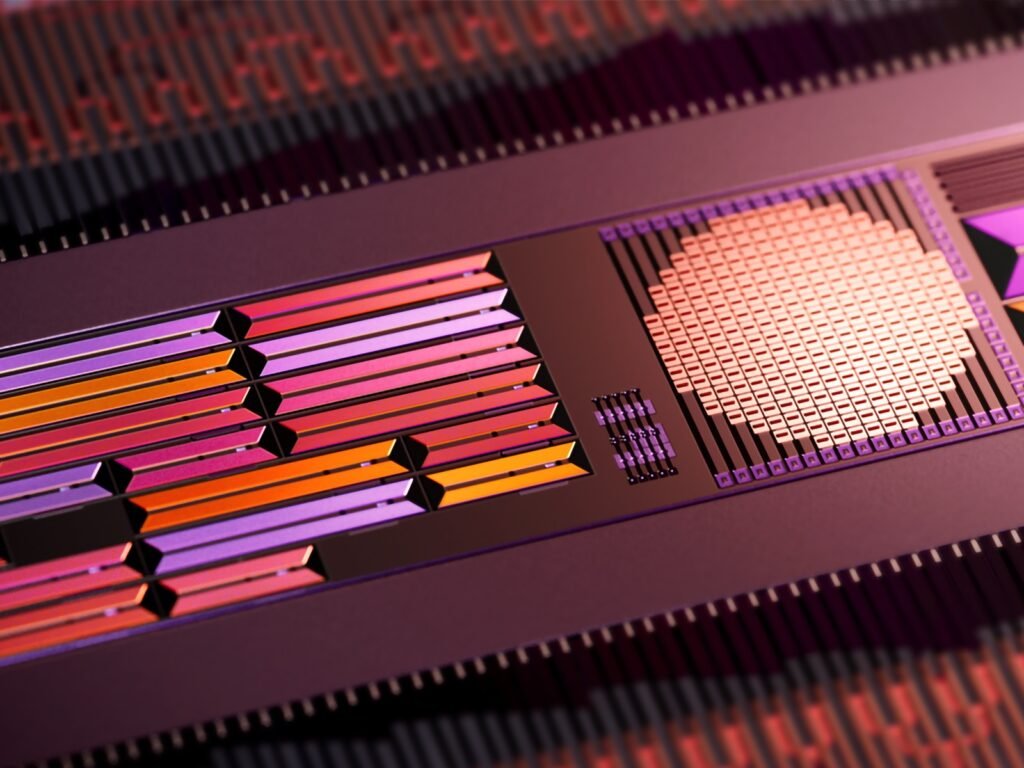Key Takeaways
- Taara is a laser-based internet technology developed by Alphabet (Google) to provide high-speed internet.
- It uses Free-Space Optical Communication (FSOC) to transmit data through the air via laser beams between ground terminals called Lightbridges.
- Taara offers a potentially faster and more cost-effective alternative to traditional fiber and satellite internet like Starlink in many situations.
- While it boasts high speeds and lower costs, Taara requires a clear line of sight and can be affected by weather conditions like fog.
Taara: Alphabet’s Innovative Laser Internet
In our modern world, having quick and dependable internet has become more and more important. It affects how we learn, work, and connect with each other. However, billions of people around the world still don’t have good internet access. This digital divide separates those who have access to technology and those who don’t, especially in rural areas and communities that are often overlooked. Usually, setting up internet in these places can be expensive and take a long time, especially when it involves laying down fiber optic cables in remote locations.
This problem has sparked new and creative ways to deliver internet. Alphabet, the company that owns Google, has come up with a technology called Taara that uses laser beams to send high-speed internet signals. Taara aims to be a faster, more efficient, and possibly cheaper way to connect people. This positions it as a competitor to internet services that rely on satellites, like Starlink.
Understanding Taara Laser Internet Technology

How Taara Works: Free-Space Optical Communication (FSOC) Explained
Taara laser internet works using a technology called free-space optical communication (FSOC). Unlike Starlink, which uses satellites orbiting the Earth, Taara sends data through the air using invisible laser beams. Think of it like fiber optic cables, where information travels as pulses of light, but without the actual cables. Taara uses ground-based units called “Lightbridges” to send and receive these laser beams. These Lightbridges are about the size of a traffic light. Inside, they have small mirrors that carefully aim the laser beams at each other with great precision.
Key Advantages of Taara’s Laser Technology
One of the main benefits of Taara’s laser technology is its ability to reach very high internet speeds, up to 20 gigabits per second (Gbps). This is much faster than many internet connections people use today. These high speeds can be maintained over distances of up to 20 kilometers (12 miles) between Lightbridge units. To cover even longer distances, multiple Lightbridge towers can be connected in a series. For example, to cover 100 kilometers, you would need about six towers. Taara’s main goal is to provide fast, high-capacity internet without the difficulties and costs of installing physical fiber infrastructure.
Taara Laser Internet vs. Starlink: A Comparative Analysis
Both Taara and Starlink have the same goal: to bring internet access to areas that are underserved and remote. However, they achieve this using very different technologies.
Fundamental Technological Differences: Laser Beams vs. Satellites
Starlink uses a large network of low-Earth orbit satellites that send internet signals to ground stations and then to users’ homes. This makes it a good option for very remote places, even on ships and in rural communities. On the other hand, Taara expands existing internet networks by connecting them using laser beams between terminals on the ground. This technology needs a direct line of sight between these terminals.
Cost and Deployment Strategies
Taara has a significant cost advantage over Starlink. Setting up and maintaining a satellite system like Starlink involves huge costs for launching satellites, getting licenses for radio frequencies, and dealing with government regulations. Taara aims to be a more affordable and efficient choice in many areas because it doesn’t need a lot of underground infrastructure like fiber cables. Deploying Taara involves setting up Lightbridge terminals, which is generally less complicated than launching and managing satellites.
Advantages and Disadvantages of Taara Laser Internet
- Advantages:
- High Bandwidth and Speed Potential: Taara can potentially offer 10 to 100 times more bandwidth than a typical Starlink antenna.
- Lower Infrastructure and Operational Costs: It avoids the high expenses linked to satellite infrastructure.
- No Contribution to Space Debris: Unlike satellites, Taara doesn’t add to the growing problem of space junk.
- Fewer Regulatory Hurdles Compared to Space-Based Systems: Operating on the ground means fewer complex regulations compared to space-based internet.
- Disadvantages:
- The Critical Requirement for a Clear Line of Sight: The laser beams need an unobstructed path between the terminals. Things like hills or buildings can block the signal.
- Impact of Weather Conditions (Fog, Rain, Pollution) on Performance: Bad weather, especially thick fog, can significantly affect how well the system works.
- Current Focus on Partnerships with Telecom Carriers (Limited Individual Subscriptions): Right now, Taara mainly works with telecommunication companies instead of offering internet directly to individual users.
Advantages and Disadvantages of Starlink
- Advantages:
- Truly Global Coverage, Including Remote and Mobile Locations: Using satellites allows internet access almost anywhere in the world, even in very isolated areas and on moving vehicles.
- Existing and Expanding Satellite Infrastructure: Starlink has already launched a large number of satellites, providing significant coverage.
- Disadvantages:
- Higher Costs for Equipment and Service: Both the initial setup and the monthly fees are generally more expensive than traditional internet.
- Potential for Slower Speeds in Densely Populated Areas: The bandwidth can be shared among many users in cities, which can lead to slower speeds during peak times.
- Concerns Regarding Space Debris: The large number of satellites raises worries about potential collisions and the increasing amount of space junk.
- Complex Regulatory Landscape: Dealing with licenses for radio frequencies, approvals for satellite launches, and international political issues can be challenging.
Overcoming Challenges in Laser Internet Technology
Addressing Weather Disruptions: Taara’s Innovative Solutions
A major challenge for laser-based internet technology has always been disruptions caused by weather. However, Taara has made progress in tackling these issues. Their smart terminals have sensors and computer programs that can adjust their alignment very quickly. This helps maintain a more stable and reliable connection, even when there’s bad weather or small things like birds flying through the laser beam. Despite these improvements, thick fog remains a significant obstacle for laser communication.
The Taara Chip: A Next-Generation Advancement

Taara is currently developing its next-generation technology: a silicon photonic chip. This chip is designed to make the Lightbridge terminals much smaller, possibly even as small as a fingernail. Instead of using large mirrors and moving mechanical parts, this new technology will use solid-state circuits. The company expects this to significantly lower the cost of Taara’s equipment. It might also allow one laser transmitter to connect to several receivers at the same time. This innovation could be a big step towards making laser internet more widely available and affordable.
Real-World Applications and Strategic Partnerships of Taara
Bridging the Digital Divide in Underserved Communities
Taara has already been used in several real-world situations to help underserved communities get internet access in areas where traditional infrastructure is lacking. For example, after an underwater cable broke, Taara’s technology reconnected Anguilla and St. Martin in the Caribbean, restoring internet for 11,500 people. It has also been used in sub-Saharan Africa, starting in Kenya, through a partnership with Econet Group. In India, Taara teamed up with Airtel to bring faster internet to more people. A notable success was connecting Brazzaville, which had a direct fiber connection, across the Congo River to Kinshasa, where internet was much more expensive. This gave Kinshasa internet access that was almost as affordable as in Brazzaville.
Providing Emergency Connectivity During Disasters
Taara can also provide emergency internet access when natural disasters damage or destroy regular communication systems. A test version of Taara helped provide emergency connectivity in Puerto Rico after Hurricane Maria. Because it can be set up quickly, it’s a valuable tool for getting communication back up and running in critical situations.
Enhancing Connectivity at Large-Scale Events
To improve internet connections at large events where phone signals can get overloaded, Taara has been used to increase capacity. It was successfully tested at the Coachella Music Festival in the US, providing extra internet bandwidth for the hundreds of thousands of attendees. This improved connectivity by adding more capacity when many people were using their devices at the same time.
Collaboration with Telecom Providers: Taara’s Business Model
Taara’s main way of expanding its reach is by forming partnerships with telecommunication providers. This helps these providers extend their networks into more remote areas. By working together, Taara can use the existing infrastructure of these carriers and connect with more customers without directly selling subscriptions to individuals. Their collaborations with companies like Bharti Airtel and T-Mobile show how Taara can fit into and work with established telecom networks. This model helps bring internet access to more underserved regions.
The Future Potential of Laser Internet with Taara
Implications for Next-Generation Wireless Technologies (6G and Beyond)
The creators of Taara believe that light will play a crucial role in future wireless technologies, such as 6G and even 7G. They argue that the current radio wave frequencies are becoming too crowded, which limits how much faster and how much more data we can send. Using laser communication offers a much wider range of frequencies and could lead to significantly faster and more reliable connections in the future.
Navigating the Regulatory Landscape for Ground-Based Laser Technology
Unlike satellite internet, Taara’s ground-based laser internet technology operates under different regulations. It avoids the complex processes of getting licenses for radio frequencies and approvals for satellite launches. This could make it easier and faster to deploy and expand the technology in various regions.
The Evolving Competitive Landscape in Non-Traditional Internet Services
While Starlink has been a major player in the non-traditional internet space, more competition is emerging. Companies like Eutelsat OneWeb are also becoming contenders with their satellite-based networks. The success of these different providers will depend on their ability to navigate government regulations, prove that their technology is reliable and scalable, and offer attractive solutions to users and businesses.
Conclusion: The Bright Future of Taara Laser Internet
Taara represents a significant step forward in the field of laser internet. By using free-space optical communication, Taara can deliver high-speed internet connections and has the potential to be more cost-effective than traditional methods and satellite-based services in many situations. While it faces challenges like the need for a clear line of sight and vulnerability to adverse weather, ongoing technological advancements, such as the Taara chip, are helping to overcome these limitations. As our demand for data continues to grow, Taara’s innovative use of light has the potential to transform how people access the internet in the years to come.
Frequently Asked Questions (FAQ)
What exactly is Taara laser internet?
Taara is a technology developed by Alphabet that uses invisible laser beams to transmit high-speed internet data through the air between ground-based terminals called Lightbridges.
How is Taara different from traditional fiber optic internet?
Traditional fiber optic internet uses physical cables made of glass or plastic to transmit data as light pulses. Taara also uses light pulses but transmits them wirelessly through the air, eliminating the need for physical cables between the terminals.
How does Taara compare to satellite internet services like Starlink?
Starlink uses a network of satellites in low Earth orbit to beam internet signals to users. Taara uses ground-based laser transmitters and receivers. Starlink offers wider global coverage, while Taara can offer higher speeds and potentially lower costs in suitable environments.
What are the main advantages of using Taara?
The main advantages include the potential for very high internet speeds, lower infrastructure and operational costs compared to fiber and satellites in many areas, no contribution to space debris, and fewer regulatory hurdles than space-based systems.
What are the limitations or disadvantages of Taara?
The key limitations are the requirement for a clear line of sight between terminals and the potential for performance to be affected by weather conditions like fog, heavy rain, and significant pollution.
How does weather affect Taara’s performance?
While Taara’s technology has improved its ability to handle some weather conditions, thick fog can still significantly disrupt the laser signals and reduce performance or cause temporary outages.
Where has Taara laser internet been used so far?
Taara has been implemented in various regions, including connecting communities in the Caribbean, Sub-Saharan Africa (Kenya), and India. It has also been tested for emergency connectivity and enhancing connectivity at large events.
Is Taara available for individual home internet users?
Currently, Taara’s business model focuses on partnering with telecommunication carriers to expand their network reach rather than offering direct subscriptions to individual home users.
What is the future outlook for Taara technology?
The future of Taara looks promising, with ongoing developments like the silicon photonic chip aiming to reduce costs and improve efficiency. It is also seen as a potential key technology for future wireless networks like 6G.
Articles Referenced:
Alphabet’s Spin-off Taara Takes on Starlink with Laser Internet Tech
Liberty Networks deploys Taara to bolster connectivity in Caribbean – DCD
Taara exits Alphabet’s X labs, secures external funding – DCD
Google’s Taara Hopes to Usher in a New Era of Internet Powered by Light | WIRED
Google Parent Company Unveils Silicon Photonics Chip | Business | Mar 2025





